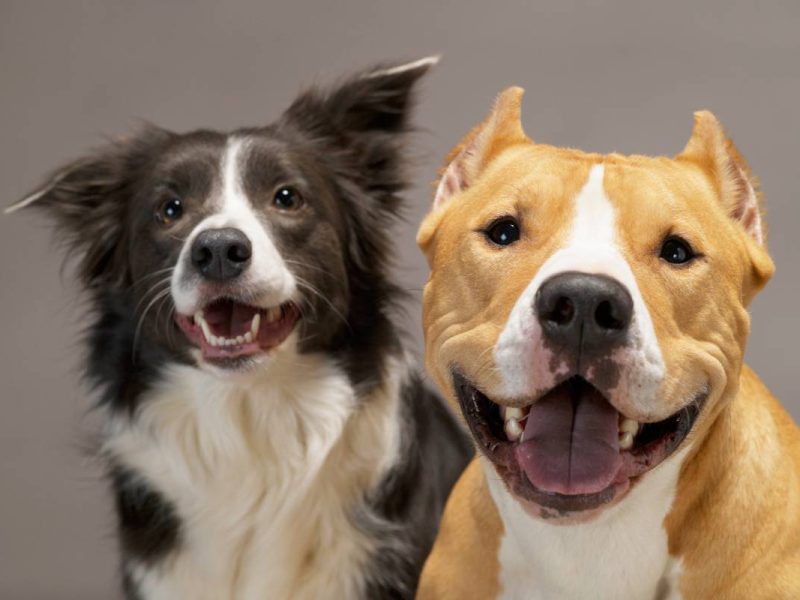When you look at your dog, it’s hard to resist the idea that they’re smiling right back at you, especially when their mouth is open, their tongue is lolling out, and their eyes seem to sparkle with joy. But do dogs smile in the same way we do? And more importantly, do their “smiles” convey the same emotions?
Understanding canine expressions requires an exploration into the behavioural, biological, and emotional worlds of dogs. By comparing human smiles to the expressions of our four-legged friends, we can uncover the similarities and differences between these seemingly universal gestures of happiness.
The Human Smile: A Unique Form of Communication
For humans, a smile is an incredibly powerful and versatile form of communication. It transcends language, age, and culture, conveying joy, friendliness, relief, and even nervousness or embarrassment. Research shows that humans have dozens of types of smiles, ranging from genuine, heartfelt grins (often called Duchenne smiles) to polite or social smiles that serve as a way to smooth interactions.
Scientifically, smiles in humans are controlled by specific muscles, primarily the zygomaticus major, which pulls the corners of the mouth upward, and the orbicularis oculi, which creates the “crow’s feet” effect around the eyes during genuine smiles. Smiling is also closely tied to emotional processes in the brain. Positive emotions like happiness trigger the release of feel-good neurotransmitters such as dopamine and serotonin, making smiling not just an expression of joy but also a physical reaction to it.
But what about dogs? Do their expressions of happiness work the same way?

Canine Expressions: Decoding the “Smile”
Dogs are highly expressive animals, capable of conveying a wide range of emotions through their body language, vocalizations, and facial expressions. When a dog appears to be “smiling,” their mouth is usually open, their tongue may hang out, and their facial muscles are relaxed. To the untrained eye, this can look remarkably similar to a human smile.
However, it’s important to recognize that a dog’s smile isn’t directly equivalent to a human smile. For dogs, this expression doesn’t necessarily have the same cultural or social significance. Instead, their “smiling” is more closely tied to specific behaviours and emotional states.
What Does a Dog’s “Smile” Mean?
- Relaxation and Contentment
When a dog looks like they’re smiling, it’s often a sign that they’re feeling relaxed and content. After a long walk, during a play session, or while lounging in a sunbeam, dogs may exhibit this open-mouthed expression. In these moments, their body language usually reinforces their mood—loose posture, wagging tail, and soft eyes. - Panting and Cooling Off
Sometimes, what we interpret as a dog’s smile is simply the result of panting. Dogs regulate their body temperature through their mouths, and an open mouth with a hanging tongue is a natural way to cool off. While this doesn’t necessarily indicate happiness, a relaxed panting dog can still be enjoying themselves, such as after vigorous play. - Submissive Grinning
Some dogs show what is known as a “submissive grin,” where they pull their lips back to expose their teeth. This may look like a human smile, but it’s actually a sign of appeasement or deference. Dogs often display this behaviour to communicate non-threatening intentions, particularly when meeting new people or dogs. - Mimicking Their Humans
Dogs are exceptional at observing and mimicking human behaviour. Some researchers believe that dogs may “smile” because they’ve learned to associate it with positive reinforcement. If their human smiles at them and rewards them with attention, treats, or affection, dogs may adopt a similar expression to communicate their own excitement or to please their owner.
The Science Behind Canine Smiling
To understand whether dogs truly smile in the same way humans do, we need to examine the science of canine emotions. Research has consistently shown that dogs experience a range of emotions, including happiness, fear, and even jealousy. However, these emotions are not identical to human emotions, as they are shaped by dogs’ unique evolutionary history and cognitive capacities.
Dogs’ happiness is often expressed through their entire body rather than just their face. A wagging tail, play bow, or excited jump are much clearer signs of joy in dogs than a facial expression alone. That said, a relaxed, open mouth can complement these behaviours, reinforcing their emotional state.
Studies on canine neurobiology have also revealed that dogs experience an increase in oxytocin—the “love hormone”—when interacting with their favourite humans. This hormone is linked to feelings of bonding and joy, suggesting that dogs genuinely feel happiness when they’re with people they trust and love. While their “smile” may not be a direct match to ours, it’s certainly a reflection of their positive emotional state.

Do Dogs Smile Consciously?
One key difference between human and canine smiles lies in intent. Humans often smile deliberately as a social tool, whether to greet someone, express politeness, or convey a particular emotion. Dogs, on the other hand, are less likely to smile intentionally. Their expressions are typically involuntary reactions to their emotions or environment.
However, that doesn’t mean dogs are incapable of understanding the power of their “smile.” Dogs are incredibly attuned to human cues and emotions, thanks to thousands of years of domestication. They can interpret human smiles as a sign of friendliness or approval and may respond with behaviours that mimic those expressions.
Shared Joy: The Bond Between Humans and Dogs
One of the most fascinating aspects of the human-dog relationship is the way our emotions and expressions influence each other. When you smile at your dog, you’re likely triggering positive emotions in them, and their response—whether it’s a wagging tail, a playful bark, or a “smile”—can, in turn, make you feel happier.
This mutual reinforcement creates a feedback loop of joy and connection. In fact, research has shown that just looking into your dog’s eyes can increase oxytocin levels for both you and your pet, strengthening your bond.
While a dog’s smile may not be identical to a human’s, the shared experience of happiness and companionship transcends the need for perfect equivalence.
How to Tell if Your Dog Is Happy
If you want to know whether your dog is truly happy, look at their whole body, not just their face. Key signs of a happy dog include:
- Relaxed body language: A loose, wiggly posture and wagging tail often indicate contentment.
- Playful behaviour: Play bows, zoomies, or inviting gestures are clear signs of joy.
- Bright, soft eyes: A happy dog’s eyes will appear bright and relaxed, without tension.
- Eager interaction: A dog that seeks out your attention, snuggles, or playtime is likely feeling good.
Remember, every dog is unique. Learning to read your dog’s specific signals will help you better understand their emotions and strengthen your bond.
The Verdict: Are Dog Smiles the Same as Ours?
So, do dogs smile the same way humans do? Not exactly. While their expressions can resemble human smiles and often align with feelings of happiness, dogs’ “smiles” are more instinctive and less socially driven than ours. They’re a reflection of their physical and emotional state, rather than a deliberate attempt to communicate joy.
That said, the similarities between human and canine smiles remind us of the deep connection we share with our furry companions. Whether it’s a grin, a wag, or a playful bounce, dogs have a special way of bringing happiness into our lives—and that’s a language we can all understand.






